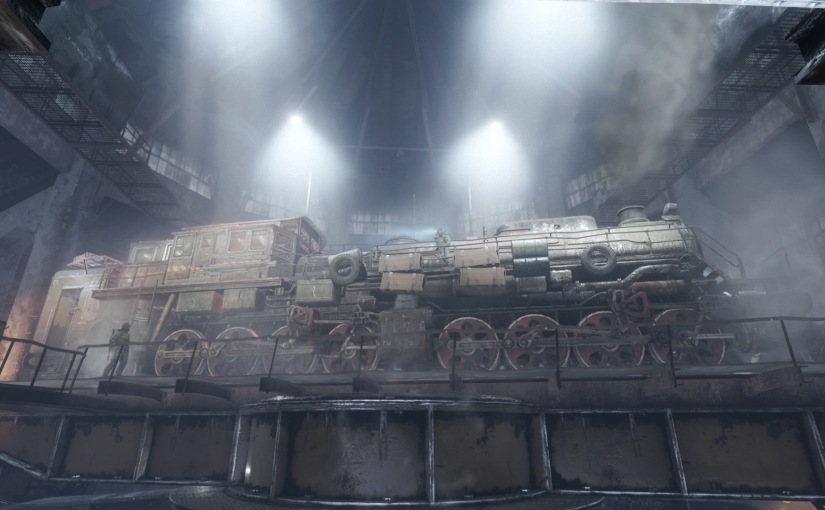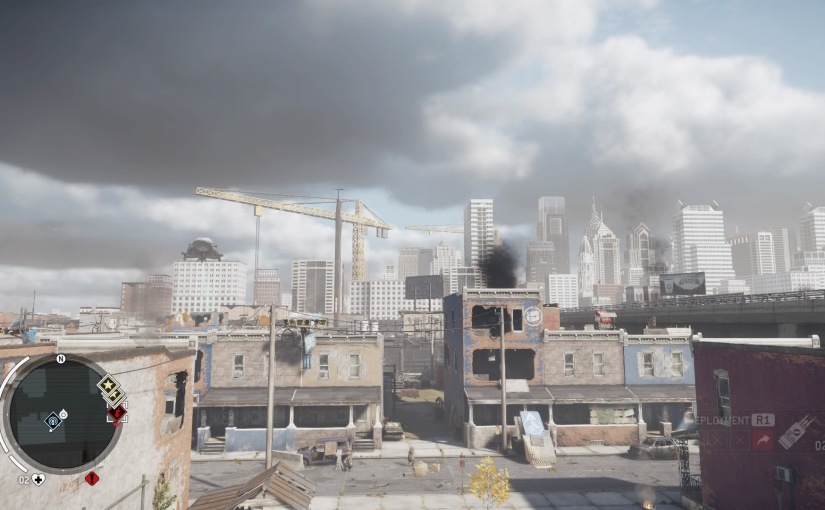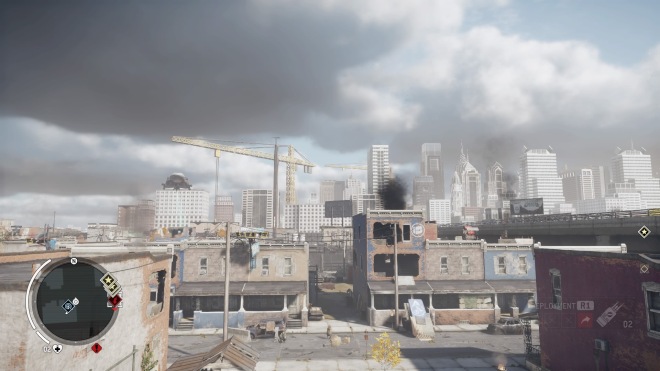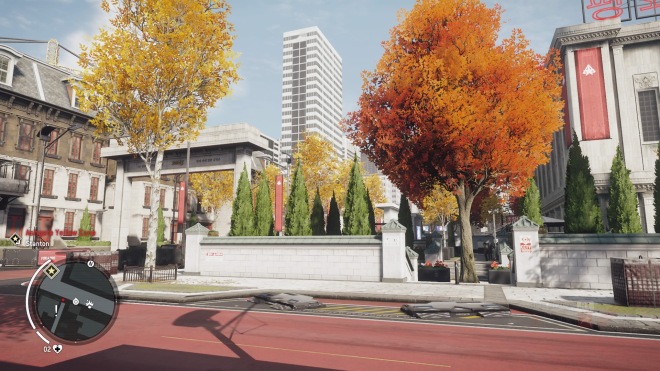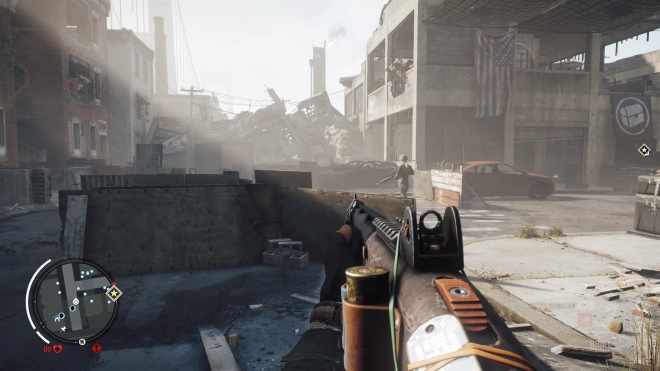I’ve always felt that the Metro series has an unbelievably good game in there somewhere. It’s established a great post-apocalyptic world and has several memorable moments throughout the first two games. But, it’s never quite reached the heights of a classic, the shooting has always been a little lacklustre, and at times the game’s felt overly linear. Metro Exodus looks to address some of the issues of its predecessors and has characteristically mixed success with it.
This time around Artyom has ventured out of the underground to discover there is human life above ground. Despite everything he thought he knew, there are places scattered about war-torn Russia where communities are, well, not exactly thriving, but doing alright considering everything. So after nabbing a beautiful steam locomotive named the Aurora, he, his wife Anna and the rest of the Order venture out beyond the confines of Moscow to find a new place to live.
It’s a surprisingly simple story setup, given the more supernatural narratives the Metro series is known for. There’s not some otherworldly being to seek out, no ghosts or quite as many voices in Artyom’s head. This stuff is all there if you go and look for it, but at its core, Metro Exodus is more concerned with the survival of the inhabitants of the Aurora and the troubles they face along the way.
The crew of your newly acquired train are an oddly compelling bunch. Their voice acting isn’t the most impressive, nor are their personalities unique enough to make them massively distinct from one another, and yet the camaraderie they share as they face a new world is kind of infectious. They waste little time arguing, are quick to help each other out and just seem to genuinely like each other. This at its best in the good ending of the game, and it’s a little bit heartwarming.

There are a few issues with your crew, but not all are personal to them. They tend to all speak at once. This might be an attempt by the developers to make conversations seem more realistic. People often speak over each other in real life, or all at once if something bad happens. However, when you add in the ambient noise of the Aurora clicking along the tracks, the blazing furnace that powers it and six or seven folks trying to speak at once, it just sounds a bit of a mess.
But on top of that, our protagonist, Artyom, offers absolutely nothing to conversations except the odd hand gesture. Being a silent protagonist was fine in the first two games. Artyom was often alone or partnered with someone who spoke to him as they completed a mission. But in this game, he’s often asked questions and responds by either waving his hands about or staring at them blankly.
There are parts of the story where his wife Anna isn’t feeling so great, and he responds by patting her on the back like she’s a dog that’s learned a new trick or simply stares at her while she’s in agony. It might not seem as jarring if he didn’t speak during loading screens, but even then, in a game that focuses on a small community, it feels like Artyom should be talking by this point.
When he’s not stunned into silence by simple questions, he’s out exploring Russia. This is where the game has seen the biggest shift. Whilst the earlier games were often set in tunnels through the Metro with occasional forays above ground, Exodus flips that on its head, spending more time above ground and in different climates.
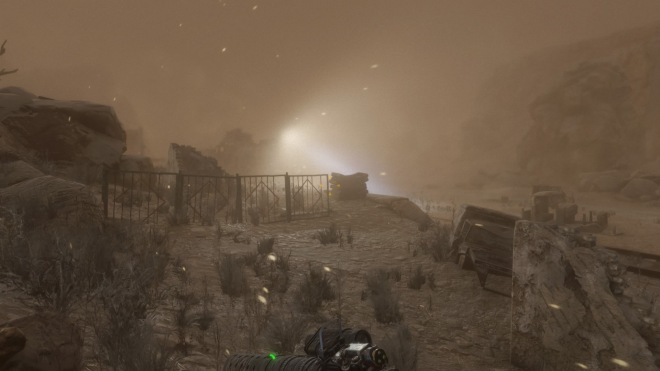
Throughout the game, you’ll head to different areas, from deserts to swamps, and enjoy all four of the seasons. That’s right. It’s not just snow and sub-zero temperatures any more. Metro Exodus likes to mix things up, you see, and it applies this to the level structure as well as location.
The first area you stop in is a little open world, where you’ll be able to venture off the beaten path in search of materials for crafting ammo and medkits or find upgrades for your weapons and gear. It brings a more scavenger-like feel to a game that totally suits the struggle to survive shtick Metro has always been into.
However, once you move on from the swamps, you’ll find a more linear level, where you’ll fight your way through a group of bad lads in tighter corridors, which is more reminiscent of the older Metros. And this is sort of the pattern it follows for the duration of the game, mixing up smaller open worlds you can take your time to explore with more linear action, or stealth if you’re that way inclined, focused sections.
Whether or not this is a bad thing will depend on your tolerance for either a linear or open world. For me, the linear levels are often more enjoyable thanks to their faster-paced nature, and it’s what the series is known for. Meanwhile, though the open world parts have their moments, they can be a little frustrating. This is because the linear levels see you fighting against humans, whereas the open world has tonnes more mutants. These are a lot more irksome to fight because of the game’s less than stellar shooting.
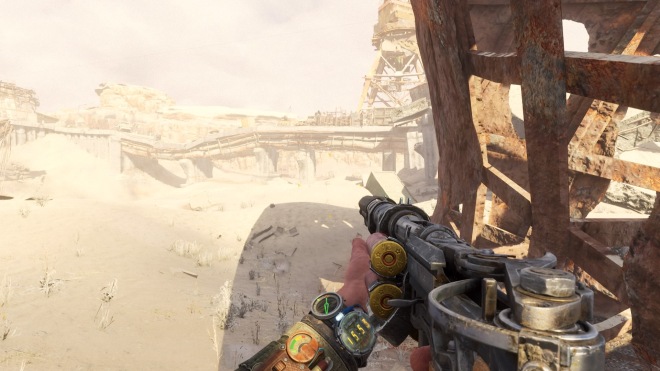
As has been the case throughout the whole series, at this stage, Metro’s shooting mechanics are a little cumbersome, which is particularly noticeable against weird creatures. The mutated denizens of the Metro world range from overgrown shrimp to crazed wolves. They all move erratically, which only serves to expose how unwieldy the shooting is. Even with the sensitivity ramped up to full, it feels like it takes Artyom an age to aim his sights on a foe and even then, it will inexplicably miss.
It’s perfectly serviceable, particularly against humans who move much more predictably, but it’s nothing to write home about. The best part about your guns in Metro is the attention to detail with the various attachments you can acquire. In Exodus, Artyom comes equipped with one of the largest backpacks in gaming history, only recently bested by the male protagonist in Pokemon Shield/Sword. With this, he can swap out sights, grips, stocks and other gun-related words that escape my memory.
The cobbled-together look these guns possess after a little tinkering is fantastic. It gives that DIY vibe you’d expect from weapons that have been desperately thrown together during a fight for survival. With all the various options available to you, it also makes it truly feel like your own weapon as you stare at the Frankenstein-like shotgun you’ve mashed together with pride.
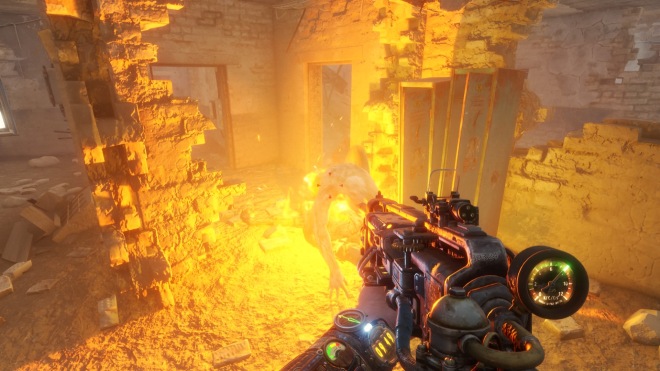
This love for detail extends to other areas of the game too. When you’re nearby to factions you’ve interacted with before, they’ll talk about Artyom and discuss his actions in previous encounters. One example came after I was escaping a crazed cult, giving both barrels to anyone who dared block my escape route until one gentleman threw his hands in the air in surrender. I may love a good shotgun blast, but I’m no monster, so I let him live. I knocked him out and took his stuff, though. Fine, I’m a bit of a monster, alright?
Anyway, when I was next sneaking about in the presence of these cultists, they discussed the events pretty much exactly as they unfolded and added that Artyom wasn’t completely beyond redemption because he showed mercy. They did condemn him for killing people in the first place, though. It’s cool to hear them discuss these events alongside hearing their opinion of your approach. It leaves you feeling like you’ve made a genuine impact on the region.
It’s things like this that make me love Metro even though its gameplay places it as a fairly mediocre title. The shooting leaves a lot to be desired which makes fighting some enemy types a pain, and whilst attempting to mix up the level types is admirable, it doesn’t always work. But all the smaller details, like the autosave indicator showing the distance you’ve travelled from the Metro and getting to know and love the crew that accompanies your journey aboard the Aurora makes it a far more enjoyable time than it otherwise would be.
7/10
